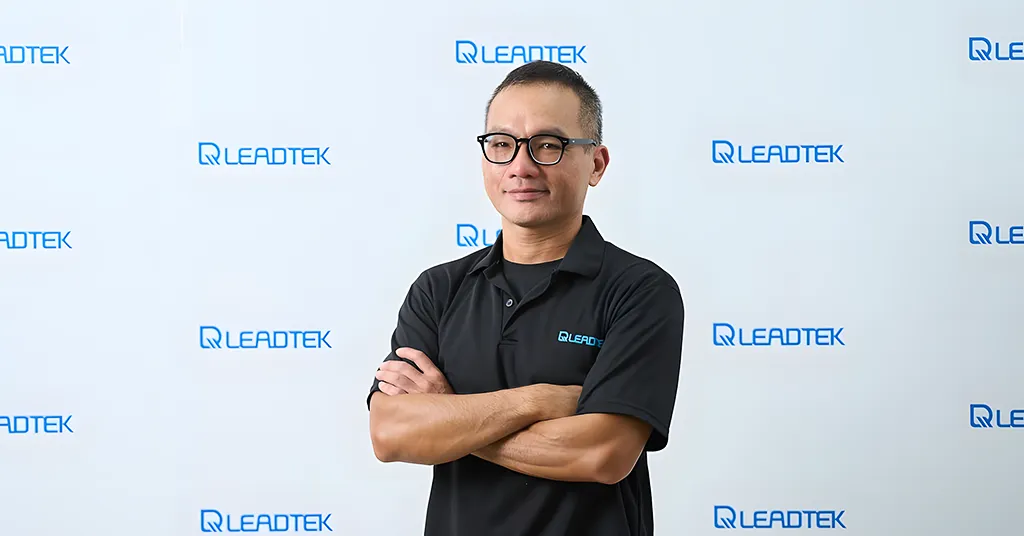
Leadtek, in collaboration with NVIDIA DLI, is launching a prompt engineering course to guide students in building LLM applications with LangChain. From fundamentals to hands-on practice, participants will master techniques for automated analysis, data structuring, and cost reduction, helping enterprises enhance AI efficiency and application value.
As generative AI becomes increasingly prevalent, more and more companies are viewing it as a tool to boost productivity. With the continuous advancement of AI technology, a major application trend is the ability to connect various AI applications and large language models (LLMs) to customize AI to meet enterprise needs.
In response to this trend, Leadtek and the NVIDIA Deep Learning Institute (DLI) have teamed up to offer the " Building LLM Applications with Prompt Engineering " course. The course features Dr. Weiyen Lin, an NVIDIA DLI-certified instructor with overseas teaching experience, who will guide students in an accessible way from the basic concepts of prompt engineering to an in-depth understanding of how to use LangChain. Participants will get hands-on experience creating a sample LLM application that can automatically identify and analyze customer feedback forms.
You may have heard of techniques for writing prompts to improve the quality of LLM responses, such as assigning the LLM a persona before asking a question: "You are now a project manager at XYZ company, analyzing a customer feedback survey." This encourages the LLM to adopt a thought process consistent with that role, thereby improving the overall quality of its response.
Prompt engineering also aims to enhance response quality, but it employs more advanced methods that can more effectively control the LLM's thought process, call on external tools, and even specify the output format. For instance, you can instruct the LLM to process input data step-by-step according to a defined procedure and generate structured data in JSON format after its reasoning is complete, facilitating subsequent processing and form creation.

As a practical example, with the help of LangChain, a company can quickly analyze customer feedback forms, automatically determine whether the overall sentiment is positive or negative, and categorize the feedback by product model and type. This allows the LLM to perform data analysis and generate detailed pivot tables without human intervention, giving managers insight into which product categories are selling best and which specific models within those categories are underperforming compared to their counterparts, providing a basis for product improvement.
By contrast, only use prompt commands to have an LLM perform data analysis is easier, but the improvement in response quality is limited. It can lead to inconsistencies in the wording of responses, such as using "TWD," "New Taiwan Dollar," and "$" interchangeably in a price field, which complicates subsequent automated data analysis.
By using LangChain for the same task, not only can the accuracy of sentiment analysis be significantly improved, but it can also ensure that the price field uses a consistent format, making the data analysis workflow much smoother.
One of the key features of LangChain is its composability: developers can flexibly assemble components like PromptTemplate, LLM, Tool, Memory, Chain, and Agent in Python, much like building with blocks, to rapidly construct various AI applications. The course will introduce the concept of Chain of Thought (CoT) and how to use prompts to enable an LLM to reason step-by-step to complete complex tasks. LangChain also provides Agent frameworks like ReAct (Reason + Act), which allow the LLM not only to "think" during its reasoning process but also to actively call upon tools to perform actions, such as conducting web searches, consolidating data, calling APIs, or operating multiple applications. Through this design, the AI can follow a planned sequence of steps to complete more complex jobs, thereby realizing the functionality of Agentic AI.
However, it is important to note that while Chain of Thought can enhance reasoning capabilities, it also significantly increases the number of tokens used by the AI during computation, which in turn raises cloud hosting and API costs. Therefore, the course will also help students understand the definition of a token and use LangChain to review system prompts, user prompts, and AI responses to simplify token usage. Finally, by using correct prompts to reduce token consumption and eliminate unnecessary tokens, the costs associated with running a 24/7 AI service can be lowered and efficiency improved, which is especially important for enterprise applications.
In the "Building LLM Applications with Prompt Engineering" course, students only need a laptop to participate through the platform provided by NVIDIA DLI, significantly lowering the barrier to entry.
The course is designed to progress from basic to advanced topics. It starts by introducing students to prompts and prompt engineering and understanding the operational logic of LLMs. It then moves on to hands-on practice with the LangChain Expression Language (LCEL), teaching how to batch process data, perform analysis, and execute generation tasks, and even how to build a chatbot that can retain conversation history. Throughout the process, you will master how to make an LLM output structured data in a specified format that can be passed to other applications. Finally, the instructor will guide you through a small project to transform complex, unstructured text into clear, organized, structured information, allowing you to truly experience the efficiency and sense of accomplishment that comes with automated data analysis.
Furthermore, if you want to take on more challenges with LLM applications, you can refer to the "Building RAG Agents with Large Language Models" course, where you can learn to build virtual customer service agents and analyze customer information to help businesses streamline operations, reduce expenses, and increase productivity on a large scale.
Another course, "Rapid Application Development Using Large Language Models" will cover the fundamentals of building LLMs from scratch. This course also includes hands-on practice, where under the instructor's guidance, you will work with sample code and datasets, using a fine-tuned model to perform tasks such as label classification, sequence classification and span prediction, as well as setting up a chatbot. Through practical scenarios, you will go through the entire process of deploying an application.